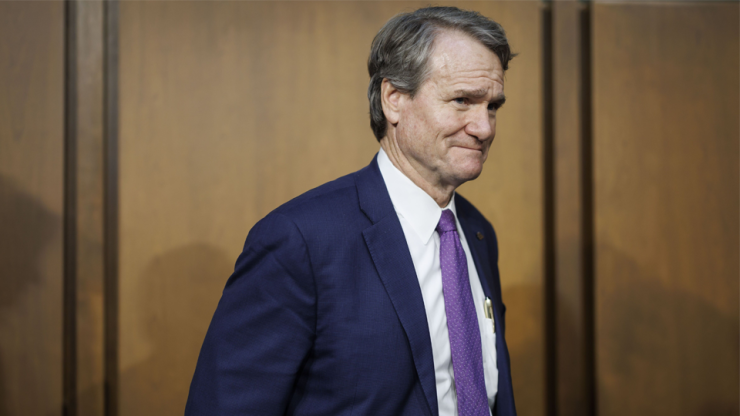
It was a rough quarter in many ways, most notably on the
But
Now, with inflation cooling to about half the level of its 2023 peak, and the Federal Reserve recently indicating it envisions rate cuts this year,
Over the past four decades, the Fed engineered five prior rate-tightening cycles and the U.S. economy went into a recession four of those times. Lending activity slowed and
"The consumers still have plenty of firepower," Chief Financial Officer Alastair Borthwick told reporters during a conference call after the $3.2 trillion-asset bank reported fourth-quarter results on Friday. He pointed to a resilient job market.
Employers added about 225,000 jobs per month on average last year. The
BofA said its average consumer loans and leases of $313 billion for the fourth quarter increased 4% from a year earlier. Combined credit and debit card spending of $229 billion among its customers was up 3%.
At the same time, should rates decline this year, the Charlotte, North Carolina-based banking giant could see its deposits cost level off along with pressure on its net interest income and bottom line.
"We feel pretty good about the economy," Borthwick said.
Still, the megabank enters 2024 facing challenges.
High interest rates — which more than doubled over 2022 and last year in several credit categories — made it increasingly difficult for some borrowers to keep pace with loan payments, pushing up credit costs. BofA charged off $1.2 billion of loans in the fourth quarter, up more than 70% from a year earlier.
Overall lending was essentially flat, while deposit levels declined and funding costs rose amid high rates. Net interest income in the fourth quarter fell 5% from a year earlier to $13.9 billion.
Total revenue dropped 10% to $22 billion.
BofA posted net income of $3.1 billion, down 56% from a year earlier. It reported earnings per share of 35 cents, down from 85 cents.
The earnings decline was attributable in large part to one-time hits that the bank had previously disclosed.
Earlier this week, BofA warned it would absorb a $1.6 billion charge tied to the industry's transition away from the
The bank, along with peers, was also subject to a special Federal Deposit Insurance Corp. assessment tied to the failures of Silicon Valley Bank and Signature Bank in the spring of 2023. The fee totaled $2.1 billion before taxes for BofA in the fourth quarter.
"But even excluding those nonrecurring charges, pre-tax earnings were still down 14% from a year ago, largely driven by a 5% decline in net interest income," Moody's Investors Service analyst David Fanger said.
During an earnings call with analysts Friday, BofA Chairman and CEO Brian Moynihan acknowledged interest rate headwinds would continue to blow into 2024 — and meaningful improvement may depend on Fed rate reductions. But he expressed confidence in a slowing but still strong economy this year, bolstered by consumer spending.
While charge-offs climbed, he said credit costs are "normalizing" after years of nearly no losses, and when rates fall, loan demand could rise and funding expenses should decline, boosting net interest income.
"They're working, they're getting paid," Moynihan said of American consumers. "They have balances on accounts. They have access to credit. They've locked in good rates on our mortgages. … We feel it's good."






